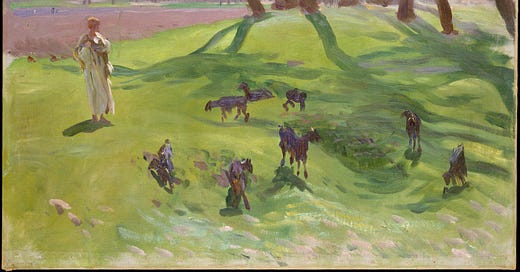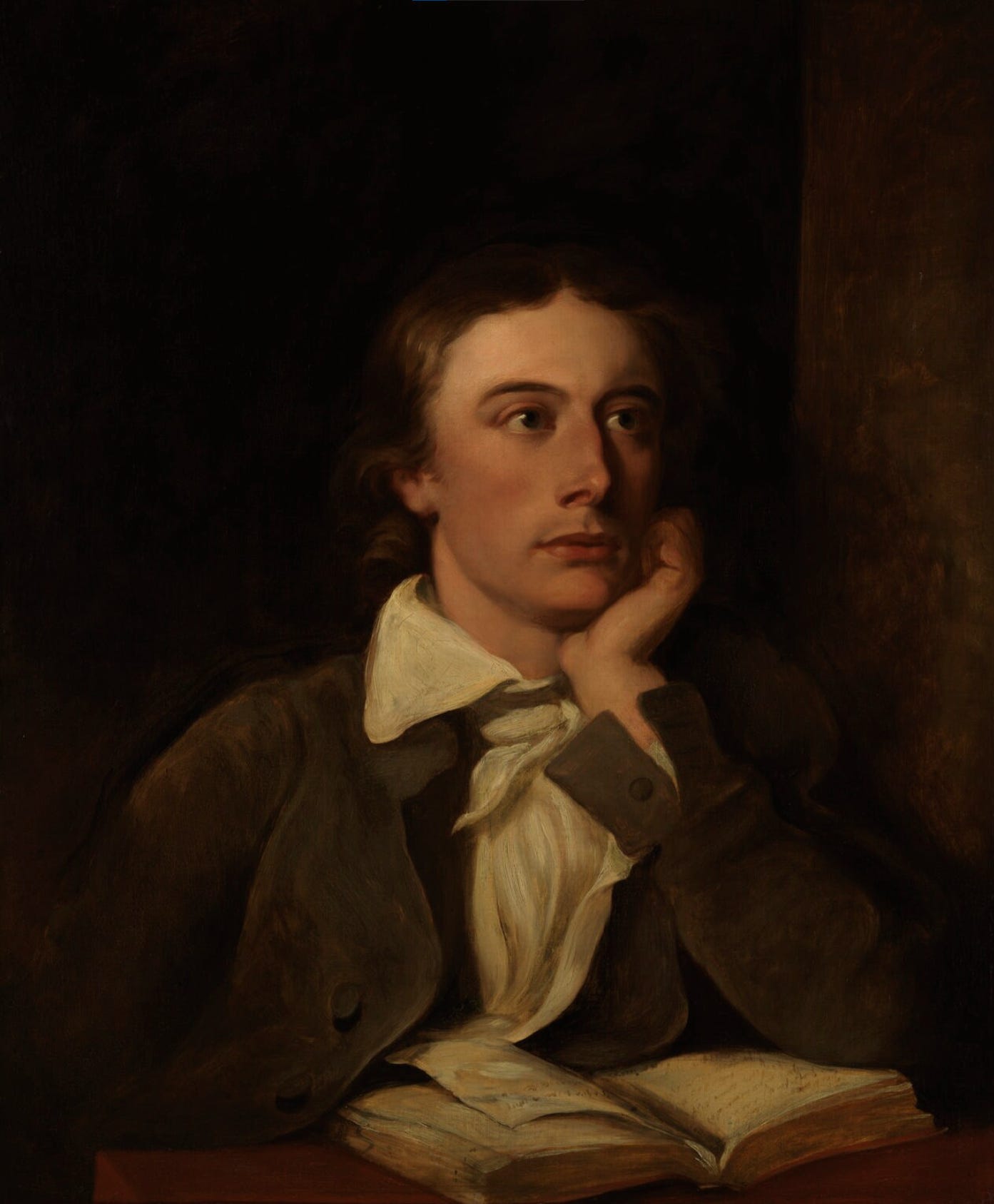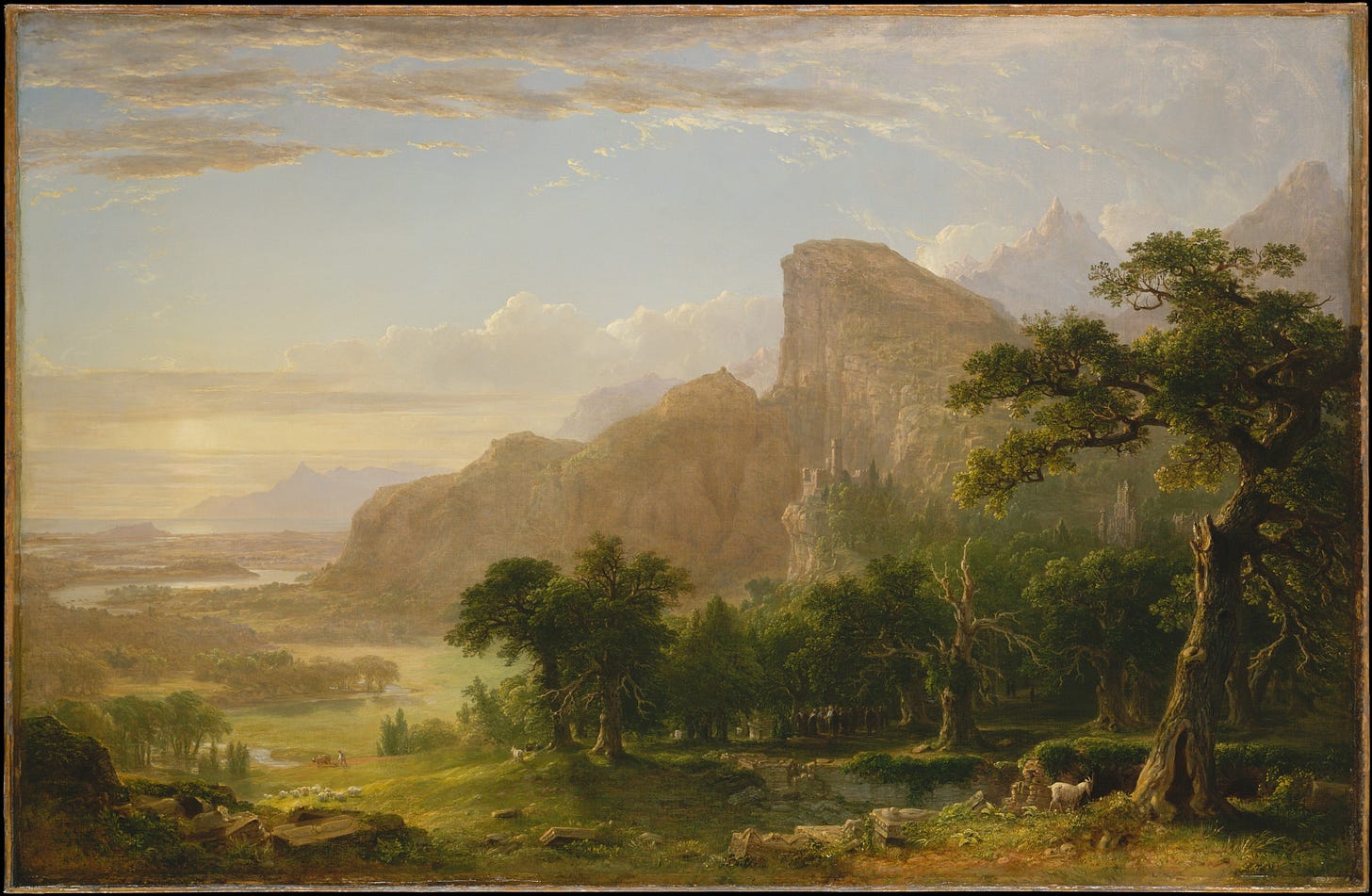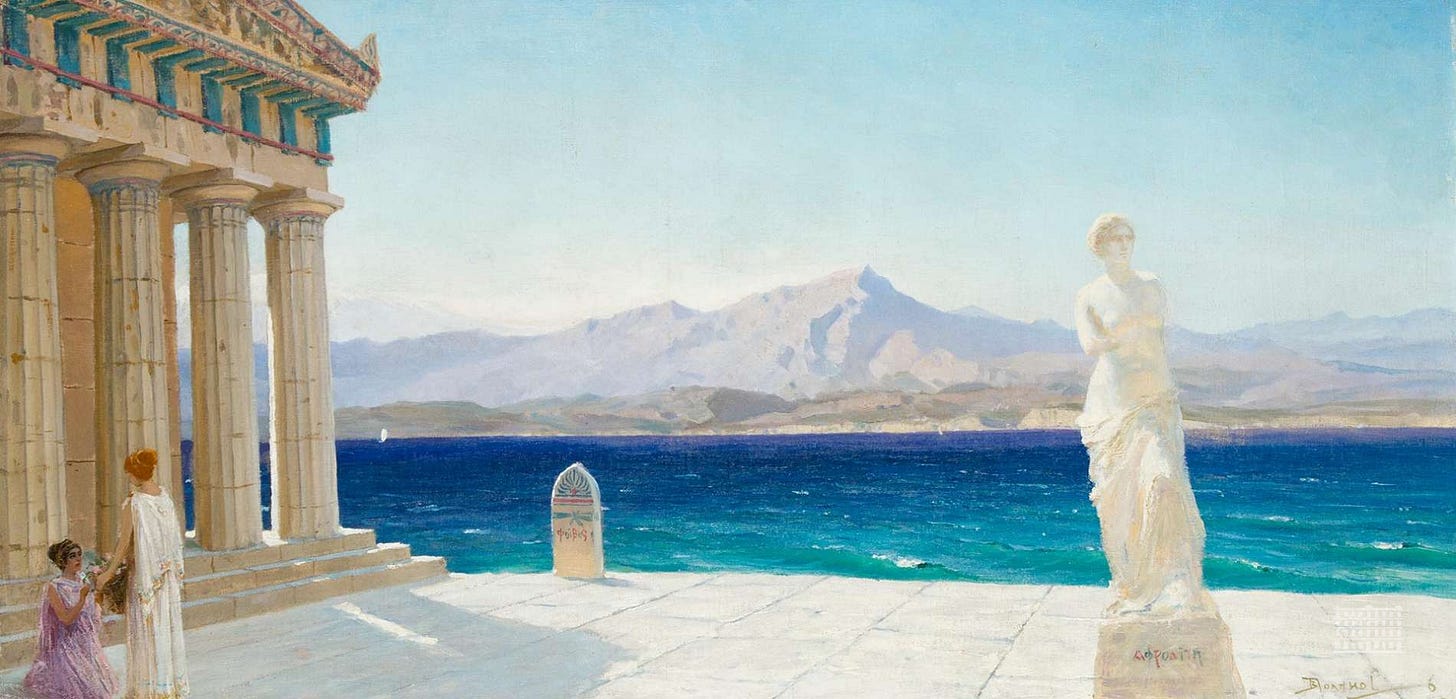Keats scholar, Robert Gittings, points out that ‘There is a sense of homecoming in all of [the May Odes]’, and ‘a sense of security in the midst of storm’. Amidst the ‘wider landscape of deep forest and woodland ways,’ he continues, there is the lingering hope ‘that the light and shade of [Keats’] own life could be reconciled’.
‘The May Odes’, the four poems written by the Romantic poet, John Keats, over a few weeks in May, 1819, are among the best known works of English Romanticism. The Odes, On Indolence, On Melancholy, To a Nightingale, and on a Grecian Urn, share many themes and images, leading the Keats scholar, Robert Gittings, to conclude that ‘these odes were composed […] as a unity’, filled as they are ‘with the garden setting of fruit, flowers, undergrowth, green lawns, and birdsong’ which was his constant view during his first summer at Wentworth Place (Gittings, 455). Perhaps more interestingly, Gittings points out that ‘There is a sense of homecoming in all of them’, and ‘a sense of security in the midst of storm’ (455-456). Amidst the ‘wider landscape of deep forest and woodland ways,’ he continues, there is the lingering hope ‘that the light and shade of his own life could be reconciled’ (463, 457).
Well, today I would like to share a few thoughts on the latter Ode that was mentioned, On a Grecian Urn, and see if we can locate this sense of homecoming, of light and shade, of longing and lingering. Along the way I will be helped out by the wonderful Keats scholar’s, Robert Gittings, and Earl Wassermann. I encourage you to read the poem in full if you haven’t already!
Fundamentally, this is a poem about ‘the eternity […] promised by art’ (Gittings, 465). Throughout, a voice surveys an Ancient Greek Urn, meditating on the stillness of the narrative images adorning its exterior. As the poet addresses the Urn in the first stanza, there are even hints that art itself may be superior to the written word:
Thou foster-child of silence and slow time, Sylvan historian, who canst thus express A flowery tale more sweetly than our rhyme:
In terms of style, the Ode is ‘written with much greater artistic certainty than all the rest’ of the May Odes (466), which is a curious detail in itself, as the poem is written ‘in [a] Socratic style’ (467) of questioning, strewn about with paradox and mystery. By this time in his life, Keats is more certain than ever in his uncertainty, in the holiness of the ‘Question’, in the sojourn and the adventure. Note his excitement, as one almost jittery with wonder, as he looks upon the images of the Urn:
What leaf-fring'd legend haunts about thy shape Of deities or mortals, or of both, In Tempe or the dales of Arcady? What men or gods are these? What maidens loth? What mad pursuit? What struggle to escape? What pipes and timbrels? What wild ecstasy?
What mad pursuit? The poet is excited, taken up into the realm of faery, experiencing that feeling of rapture that I am sure we have all experienced at different times, when particularly moved by a poem, a novel, or work of art. The speaker goes on to explore the paradoxical movement and melody of the static and silent images:
Heard melodies are sweet, but those unheard Are sweeter; therefore, ye soft pipes, play on; Not to the sensual ear, but, more endear'd, Pipe to the spirit ditties of no tone: Fair youth, beneath the trees, thou canst not leave Thy song, nor ever can those trees be bare; Bold Lover, never, never canst thou kiss, Though winning near the goal [...]
Here, the insight of Earl Wassermann is particularly helpful in putting words to these complex images. This is an Ode that ‘deals with the human and the mutable on the one hand, and the immortal and essential on the other’ (Wassermann, 113). ‘When old age shall this generation waste,’ says Keats in the final stanza, the Urn ‘shalt remain, in midst of other woe’. Intrinsically, the poem’s main theme ‘is that region where earth and the ethereal, light and darkness, time and no-time become one’ (114), and key to understanding this Ode is in the interplay between ‘the dynamic and the static’ (126). Crucially, the poem’s subject matter takes place ‘outside the context of time’ (127), which accounts for its mysterious tone and quality, allowing the subject to probe deeper into the timelessness of art, revealing in the sheer strangeness of it all.
Continuing in a mode of excitement, of poetic wonder and awe, the poet cannot contain himself, and must give way to an overflow of sheer joy, of life, of artistic expression:
Ah, happy, happy boughs! that cannot shed Your leaves, nor ever bid the Spring adieu; And, happy melodist, unwearied, For ever piping songs for ever new; More happy love! more happy, happy love! For ever warm and still to be enjoy'd, For ever panting, and for ever young;
And yet, paradoxically, there is also throughout the poem a sense of loss amidst hope, of diminishment amidst fullness. There is an abundance of happy love that cannot be fulfilled. An eternal sense of loss, of almost, of non-fulfilment, prompts one to wonder whether the journey or the destination is most to be valued. Yet, do not grieve, says the poet. There is a great hope in the immortality of the image, in the ancientness of the Urn.
For Keats especially, the great hope is to be found in Beauty and Truth. In the final lines, the Urn speaks counsel over the generations of humanity:
When old age shall this generation waste, Thou shalt remain, in midst of other woe Than ours, a friend to man, to whom thou say'st, "Beauty is truth, truth beauty,—that is all Ye know on earth, and all ye need to know."
‘Beauty’ in this Ode, writes Wassermann, ‘is not an abstraction, but a beauty so exquisitely sensory as to be the sensuous essence of beauty—an inner and experiential intensity, not a form.’ (129). Elsewhere in his letters, Keats reinforces this sentiment, declaring that ‘Axioms in philosophy are not axioms until they are proved upon our pulses’, proving sense and intuition, the wisdom of the body, to be the supreme values. ‘All of this’, says Septimus, in Virginia Woolf’s modernist novel, Mrs. Dalloway—nature, the world—all of this ‘was the truth now; Beauty, that was the truth now’ (Woolf, 76). What an exciting and lively way of viewing the world.
Bate, Jackson Walter. Keats: A Collection of Critical Essays. New Jersey: Prentice-Hall, 1964. [Wasserman’s essay appears in this volume].
Gittings, Robert. John Keats. London: Penguin Books, 1968.
Woolf, Virginia. “Mrs. Dalloway”. Edited by Stella Mcnichol, with an introduction by Elaine Showalter, Penguin Classics, 2020.









Thanks for all that. I always felt that introducing a fallen and shattered urn was a worthwhile tangent for Keats to have explored.
Wonderful essay. And indeed as Keats predicted 200 years ago the magnificent Grecian Urn sits on display in the Archaelogical Museum in Athens.Its leaves have not shed. Its youths remain young with their song still heard fresh in the soul.